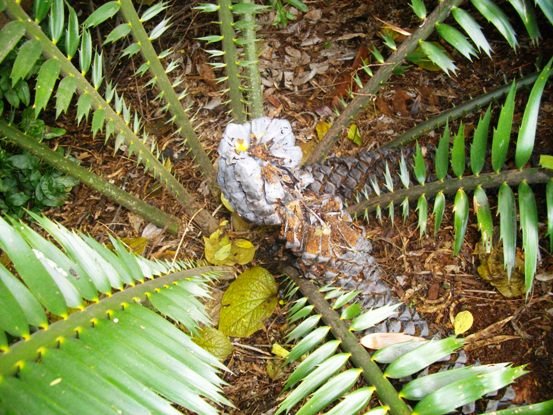Encephalartos villosus with decaying cone remains

Author: Ivan Lätti
Photographer: Ivan Lätti
Old pollen cones of Encephalartos villosus left undisturbed can be seen here. The hard scaly parts decay slowly. Viable seeds freed from a seed cone may germinate in favourable conditions around a mother plant. Seedlings for transplanting may later be found if people and animals have been kept away for long enough. In a multi-species cycad garden there is no certainty as to which species an emerging seedling belongs to; or whether it is a pure specimen of any kind rather than a hybrid. Pollination of a seed cone may have occurred from pollen of whatever species released nearby during the period of receptivity.
Cycad growers thus have similar problems to those of some historical monarchs planning their succession while not trusting their queens and suspecting interference in pure blood lines. Much has still to be learnt about cycad pollination processes, but hand pollination practices are common.
The pollen of a male plant is collected and deposited into the seed cone of another plant that has produced a cone at the right time. Insect and wind pollination, timing of coning, geographic differences, specific characteristics and more come into planning or retrospective investigation. Insect species related to certain cycad species and timing patterns of coning are examples of good items for recording of observations by grower enthusiasts for sharing in their networks (iNaturalist; www.plantapalm.com; https://pza.sanbi.org).

